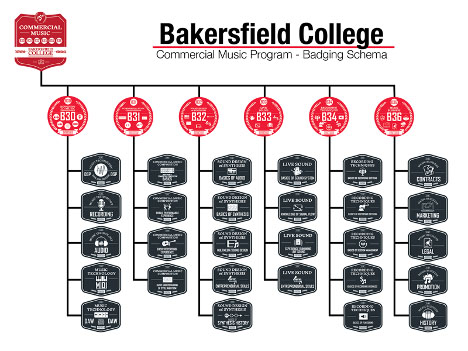
Higher education is often viewed as an “ivory tower” – disconnected from the rest of the world, impractical, and concerned with satisfying its own needs and the egos of those who work in the academic world. Bakersfield College is no ivory tower. In my 22 years of service to this great institution, I’ve known hundreds of individuals – smart, talented, and highly educated – who are dedicated to making sure that students reach their goals, whether they want to finish a degree, transfer, or find a great job. My colleagues care more for individual student success than any publication, academic journal, or professional kudos. Their dedication is evident in the time they take, their mindfulness, and their willingness to find each individual who needs help in a crowd of 40,000 students.
However, higher education has historically been bound to an archaic measurement of learning. This measurement, called the “Carnegie Unit”, was first used in 1906. The “unit” tells us how much of something a student has learned, or more accurately how much time they have spent studying it. If we say that a class is three units, it tells us something about how much time we can expect to devote to it. Even if we don’t know how much, we do have a sense that a four-unit class is more work than a one-unit class.
Take a look at a college transcript, if you can – if you don’t happen to have one handy, just search the web for “college transcript”, and you can see some samples. Almost every college transcript has three types of information on it: the names of the classes taken, the number of units assigned to each class, and how many units each class represents.
Now, imagine you are an employer trying to decide if a recently graduated student has learned the skills and knowledge that they will need to be successful at your company. You know they took “Introduction to Business”, they received a “B” grade, and it was three units. Does that tell you what you need to know? Probably not, because the information is not clear or specific. It reminds me of trying to watch a video on my computer when my internet connection is too slow. You can just make it out, if you squint your eyes and use a little imagination. This has been the standard for more than 100 years in higher education, but we have the tools, people, and the technology to do much better.
Last fall, the Academic Technology team at Bakersfield College, partnering with our Career and Technical Education leadership and funded by the California Virtual Campus – Online Education Initiative (CVC-OEI) Improving Online CTE Pathways Grant, launched an innovative effort to provide students and their future employers with a much sharper picture of student learning. Called badges or microcredentials, these digital representations of learning allow employers and students to see a much more detailed view of what happens inside a college course, down to the level of the critical skills and knowledge students will master. In addition to the more detailed view of learning, badges store information such as when and how the skill was measured. This information is authenticated and stored within the badge itself, so students will have ownership of their information and can use it in a resume or personal portfolio of their learning.

On a larger scale, badges will help to connect students with the critical skills for the jobs they are looking for upon completing their educational journey. There are already several companies who are developing job databases that are searchable by these exact same skill sets. As these develop, students will be able to use their portfolio of badges to search for jobs that match their skill sets.
Already, EMSI and Badgr have formed a partnership that ties workplace skills explicitly to badges, enabling powerful leverage of these credentials to benefit employers and job applicants. Looking ahead, there are still challenges. This type of ecosystem will take a long time to implement, and it will take work to scale this effort up to reach critical mass. This is an inherent mindset shift for faculty, as we move from seat time to attainment. However, there are many parallel movements in education, including assessment work and competency-based learning. Despite the magnitude of the shift we are beginning, there is a great deal of promise in this work.
Author:
Bill Moseley
Dean of Academic Technology
Any opinions, findings, and conclusions or recommendations expressed in this publication are those of the author(s) and do not necessarily reflect the views of the Foothill-De Anza Community College District or those of the California Community College Chancellor’s Office.
